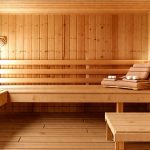Kidney stones are notoriously painful, affecting millions worldwide. The discomfort arises from these hard deposits forming in the kidneys and potentially traveling through the urinary tract. Managing kidney stone episodes often involves pain relief, increased hydration, and sometimes medical interventions to help pass or remove the stones. This leads many individuals to explore complementary therapies and lifestyle adjustments to support their overall well-being during and after a kidney stone event. One such consideration is sauna use – a practice known for its potential health benefits but also involving significant physiological changes that raise questions about safety, particularly for those with pre-existing conditions like kidney stones.
The appeal of a sauna stems from the promise of relaxation, detoxification, and improved circulation. However, these very mechanisms can present complexities when it comes to kidney stone sufferers. Saunas induce profuse sweating, leading to fluid loss and concentrated urine – factors that could theoretically exacerbate stone formation or worsen symptoms. Conversely, some argue that the increased blood flow and potential for muscle relaxation might offer relief during a painful episode. The key lies in understanding the nuances of how saunas interact with kidney function and stone development, and recognizing when sauna use is appropriate (or not) based on individual circumstances. This article explores these considerations, aiming to provide informative insights without offering medical advice.
Understanding Kidney Stones & Sauna Physiology
Kidney stones form when certain minerals become highly concentrated in urine, crystallizing into hard masses. Several types of kidney stones exist, the most common being calcium oxalate stones. Other types include struvite, uric acid, and cystine stones, each with its own formation process. Risk factors for developing kidney stones include dehydration, diet (high in protein or sodium, low in citrate), family history, obesity, certain medical conditions like hyperparathyroidism, and some medications. Preventing stone recurrence often involves dietary modifications, increasing fluid intake, and addressing underlying health issues. It’s vital to consult a healthcare professional for personalized guidance on kidney stone prevention and management.
Saunas, conversely, operate by exposing the body to dry heat (typically 150-195°F or 65-90°C). This induces several physiological responses: increased heart rate, elevated blood flow, profuse sweating, and muscle relaxation. The core body temperature rises as the body attempts to regulate itself, often triggering vasodilation (widening of blood vessels) near the skin surface to dissipate heat. Sweating is a primary cooling mechanism, but it also leads to significant fluid loss. This fluid loss can concentrate urine, potentially creating an environment more favorable for stone formation in susceptible individuals. The increased cardiovascular strain from sauna use should be considered too, especially if someone already has underlying health concerns.
The interaction between these two – kidney stones and sauna physiology – is the core of the safety concern. While a healthy individual can generally tolerate the physiological stress of a sauna, those with kidney stones may face heightened risks depending on their specific situation. The potential for dehydration is particularly worrisome, as insufficient fluid intake is a major contributing factor to stone formation and exacerbates existing symptoms during an acute episode. Moreover, the rapid changes in body temperature and blood flow could theoretically influence the movement or even dislodge small stones, potentially causing increased pain and complications.
Potential Risks of Sauna Use with Kidney Stones
- Dehydration: This is arguably the biggest risk. Saunas dramatically increase sweat production, leading to fluid loss. Dehydration concentrates urine, increasing the likelihood of crystal formation and stone growth. It can also worsen the pain associated with a passing stone by reducing urinary flow.
- Increased Stone Formation: Concentrated urine provides the ideal environment for minerals to crystallize and form stones. For individuals prone to specific types of stones (like calcium oxalate), this risk is amplified.
- Exacerbated Pain During Passage: If a stone is already moving through the urinary tract, dehydration can reduce urine flow, making passage more difficult and intensely painful. The increased cardiovascular stress from sauna use might also contribute to discomfort.
- Cardiovascular Strain: Saunas place an additional burden on the cardiovascular system. Individuals with pre-existing heart conditions or kidney disease (which often accompanies kidney stones) may be at higher risk of adverse effects.
It’s important to remember that these are potential risks, not guaranteed outcomes. The severity of the risk depends heavily on several factors including the type and size of the stone, individual hydration levels, overall health status, and the duration/frequency of sauna use. It is crucial to avoid sauna use during an acute kidney stone episode—when you’re actively experiencing pain from a passing stone—and instead focus on staying well-hydrated and following medical advice.
Hydration Strategies for Sauna Users with Kidney Stone History
If, after careful consideration and consultation with a healthcare professional, someone with a history of kidney stones chooses to use a sauna, proactive hydration is absolutely essential. This isn’t simply drinking water before, during, and after; it’s a strategic approach:
- Pre-Hydration: Begin hydrating significantly in the hours leading up to sauna use. Aim for at least 16-24 ounces of water (or electrolyte solution) several hours beforehand.
- During Sauna Use: Sip on water or an electrolyte beverage throughout the sauna session, even if you don’t feel thirsty. Avoid sugary drinks, which can worsen dehydration.
- Post-Sauna Rehydration: Replenish fluids aggressively after exiting the sauna. Continue drinking water and electrolytes for several hours to restore fluid balance. Monitor urine color – it should be pale yellow, indicating adequate hydration.
- Electrolyte Balance: Sweating depletes electrolytes (sodium, potassium, magnesium). Consider consuming electrolyte-rich beverages or foods to maintain balance.
Beyond simple hydration, consider incorporating citrate-rich fluids into your diet. Citrate inhibits calcium stone formation and can help prevent recurrence. Lemonade, limeade, and orange juice are good sources, but be mindful of sugar content. Finally, avoid alcohol before or after sauna use, as it further contributes to dehydration. Remember that these strategies aim to mitigate risk – they do not eliminate it entirely.
When to Absolutely Avoid Sauna Use
There are specific circumstances where sauna use is unequivocally contraindicated for individuals with kidney stone history:
- Acute Kidney Stone Episode: If you’re experiencing pain from a passing stone, avoid the sauna completely. The dehydration and increased stress will only worsen your condition.
- Severe Kidney Disease: Individuals with significant chronic kidney disease should generally avoid saunas due to the added strain on their kidneys.
- Dehydration Symptoms: If you are already dehydrated (experiencing thirst, dizziness, dark urine), do not use a sauna.
- Certain Medical Conditions: Heart conditions, uncontrolled hypertension, and other health issues may make sauna use unsafe. Always consult your doctor before using a sauna if you have any underlying medical concerns.
- Pregnancy: Pregnant women should avoid saunas due to the risk of overheating and potential harm to the developing fetus.
The most important takeaway is this: listen to your body. If you feel unwell at any point during or after sauna use, immediately stop and seek medical attention if needed. This information serves as a guide for informed decision-making, but it should never replace professional medical advice.
Disclaimer: This article provides general information about kidney stones and sauna use and is not intended to be a substitute for professional medical advice. Always consult with your healthcare provider before making any decisions related to your health or treatment.





















